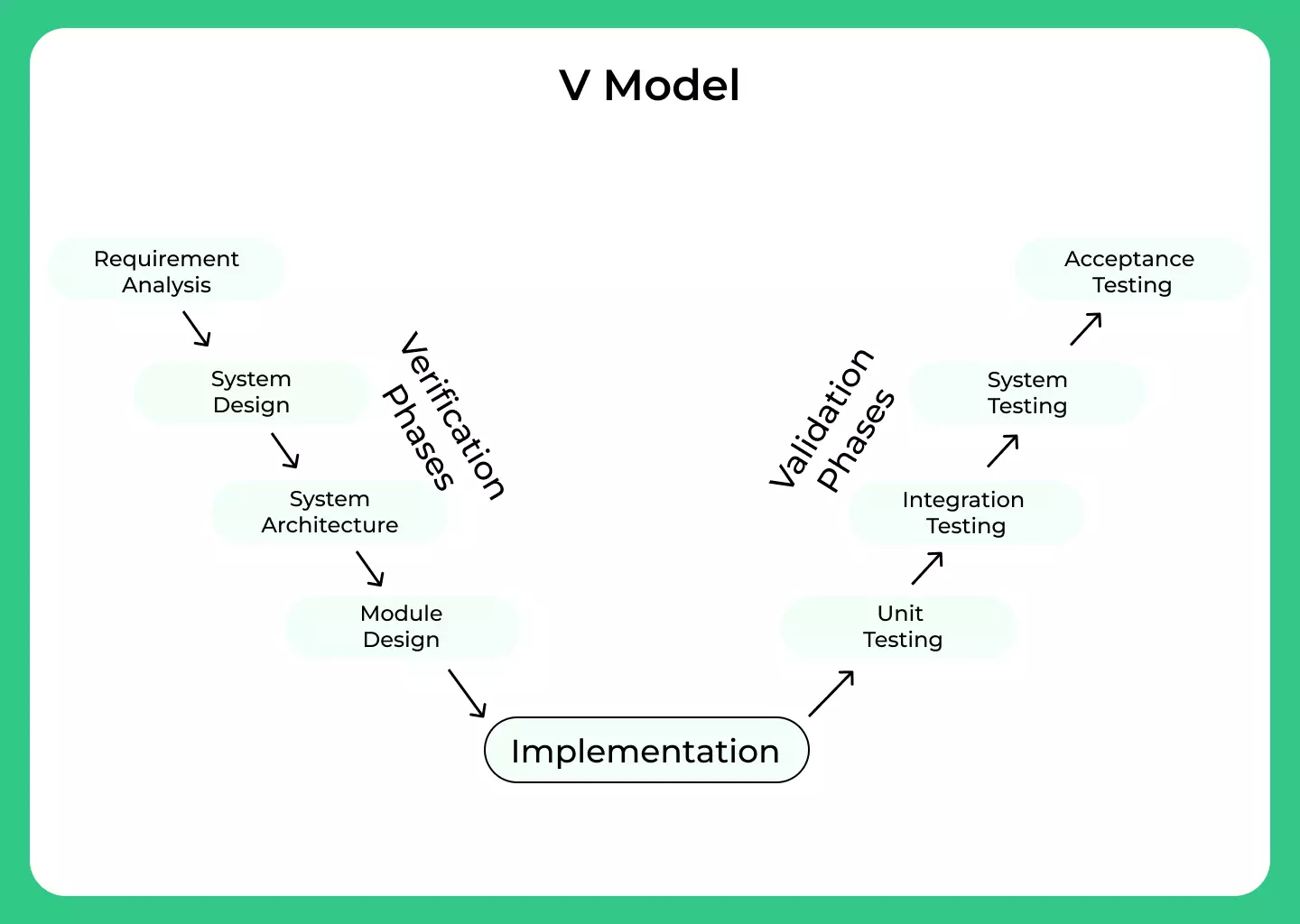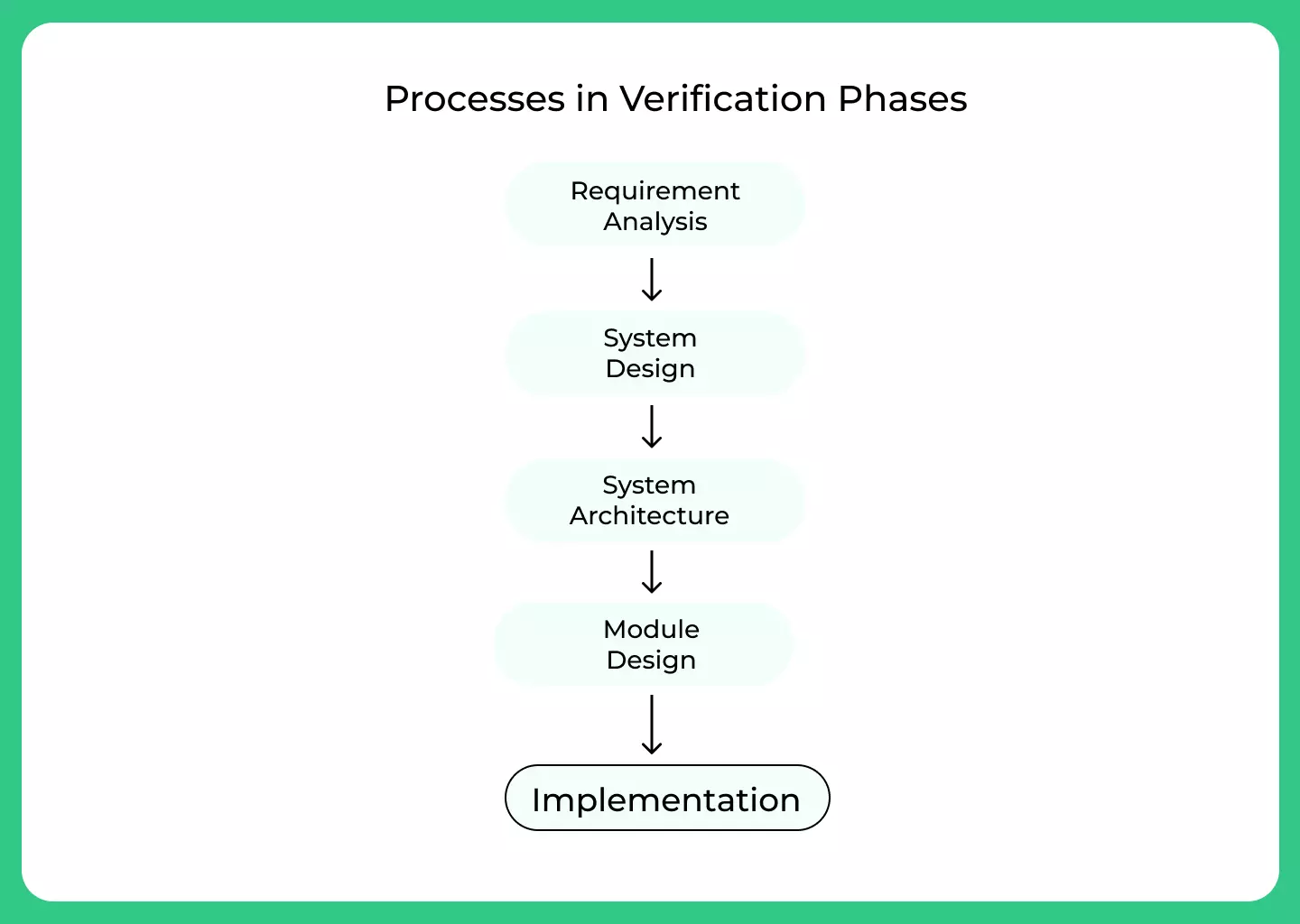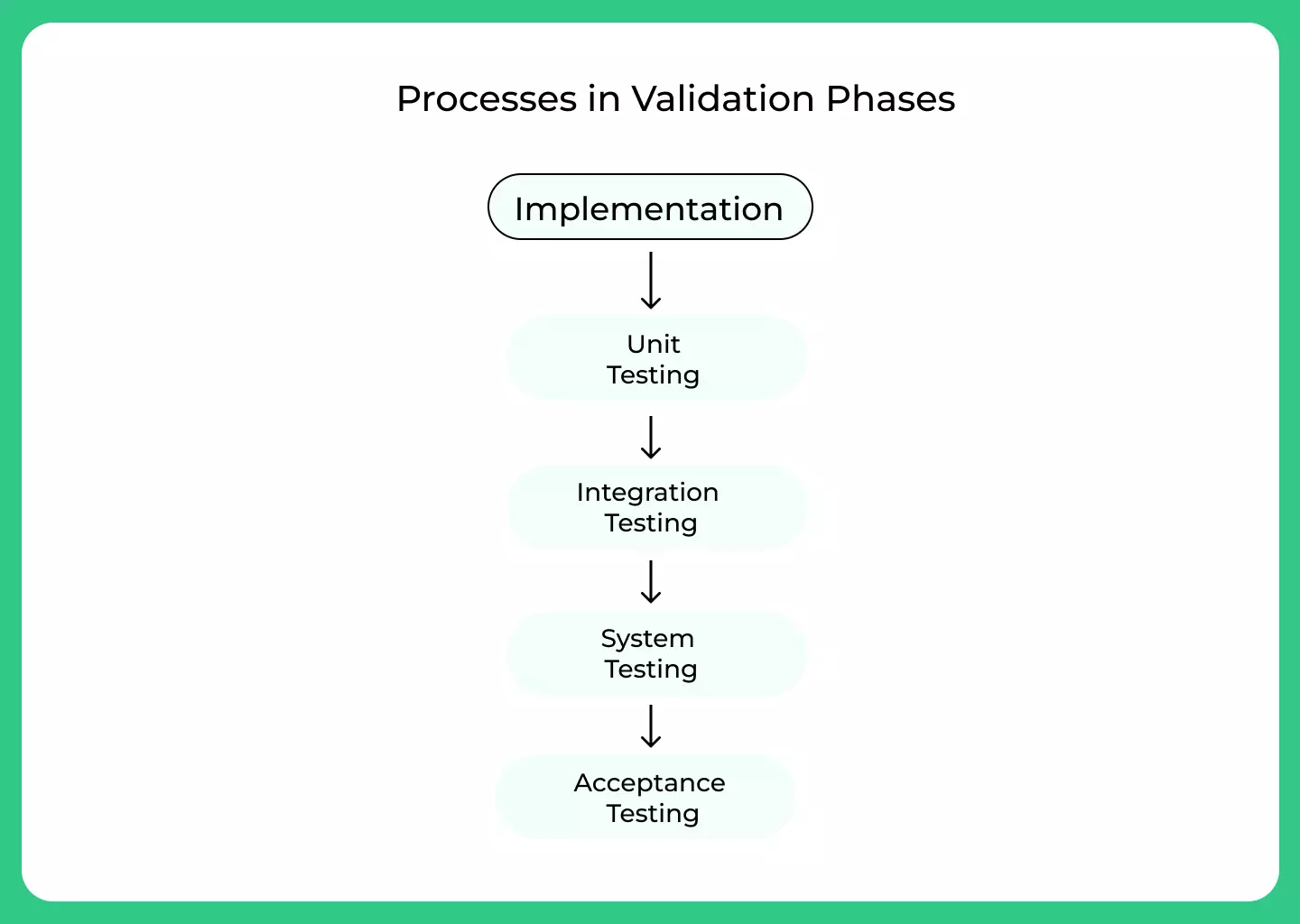V Model in SDLC
What is V model in SDLC?
The V model is a graphical representation of the systems development life cycle (SDLC) that maps the stages of a project from the beginning to the end. It is called the V model because the diagram looks like a V, with the two legs of the V representing the verification and validation phases of the project, and the point at the bottom representing the start of the project.
The V model is a graphical representation of the systems development life cycle (SDLC) that maps the stages of a project from the beginning to the end. It is called the V model because the diagram looks like a V, with the two legs of the V representing the verification and validation phases of the project, and the point at the bottom representing the start of the project.

Phases in V Model of SDLC
1- Verification phase
2- Validation phase
Verification :
In the V model of software development, the verification phase is the phase in which the work produced in the design phase is checked to ensure that it meets the specified requirements. This is done through activities such as inspections, reviews, and testing. The goal of the verification phase is to find and fix defects as early as possible in the development process, in order to reduce the overall cost of fixing those defects.
Validation :
In the V model of software development, the validation phase is the phase in which the developed software is tested to ensure that it meets the specified requirements. This phase follows the implementation phase, in which the software is actually built. During the validation phase, the software is tested to ensure that it is working as intended and meets the user requirements.

2- This model is very simple, easy and useful.
3- This is a high quality model and all the phases are completed at once.
4- This model is use to track the process of project management.
5- This model saves a lot of time and efforts.
6- Testing is starting at the initial phase so there is no issue of bugs.
7- Client’s requirements are not clearly specified.
Processes in Verification Phases of V Model
- Requirement Analysis:
In this phase, developers collects information from customers about the software.
- System Design:
When the requirements are defined clearly then implement and design the complete hardware and communication setup for developing product and choose the programming language and databases.
- System Architecture:
Architectural specifications are designed in this phase. The system design is splits further into modules taking up different working. This is also called High Level Design (HLD). In this stage, communication and transformation of data between the internal modules and the outer world is clearly specified.
- Module Design:
In this phase the system breaks down into small modules. The detailed design of modules is specified, it is also called the Low-Level Design (LLD).
- Implementation/ Coding Phase:
This is the last phase of the V-Shape model. Module design is transformed into the code. The coding is done based on the coding principles and standards in a particular selected programming language.

Processes in Validation Phases of V Model
- Unit Testing:
Unit testing is a type of white box testing .These Unit Test Plans are executed to remove bugs at code level. Unit Test Plans are created during the module design phase.
- Integration Phase:
In the integration testing, the integration test cases are executed which were developed in the High level design phase. Integration testing is a testing process in which unit tested modules are integrated and evaluated. It verifies that the modules work together as expected or not .
- System Testing:
System testing is done corresponds with the system design phase. It tests the functional and non-functional requirements and evaluate the whole system functionality and the communication of the system with external systems.
- Acceptance Testing:
This testing is done to check that the delivered system meets user’s requirement or not? Nonfunctional testing such as Load, Stress etc. are also done in this phase.

2- This model is not good if customer’s requirements are not clear.
3- There are lots of risk.
4- This model is not easy for complex projects .
5- Client have no prototype and involvement during the software development.
6- This model contains less flexibility.
7- It is hard to go back and alter the working of the system if new requirements are met.
Prime Course Trailer
Related Banners
Get PrepInsta Prime & get Access to all 200+ courses offered by PrepInsta in One Subscription
Get over 200+ course One Subscription
Courses like AI/ML, Cloud Computing, Ethical Hacking, C, C++, Java, Python, DSA (All Languages), Competitive Coding (All Languages), TCS, Infosys, Wipro, Amazon, DBMS, SQL and others



Login/Signup to comment